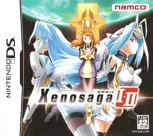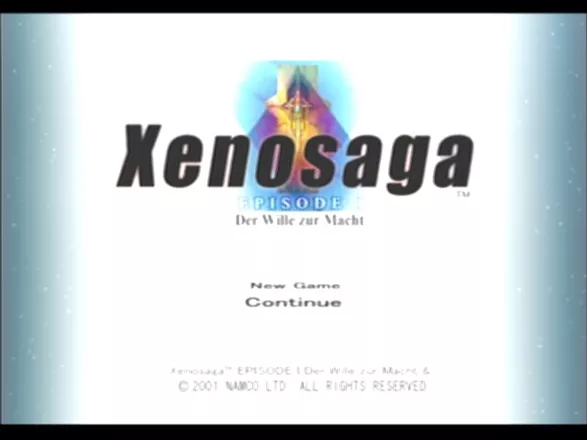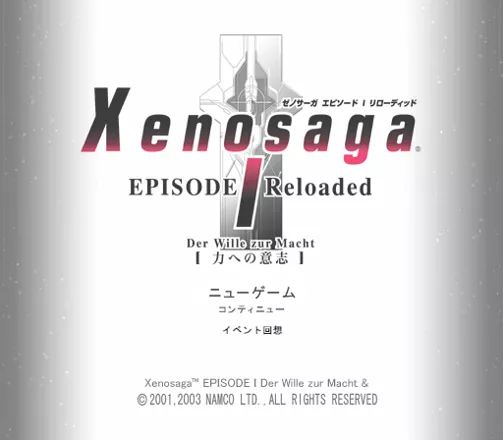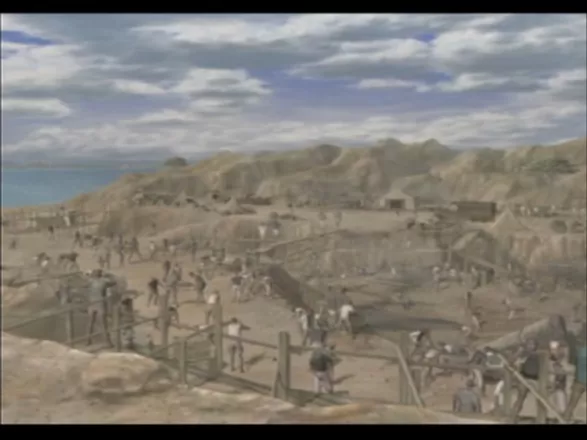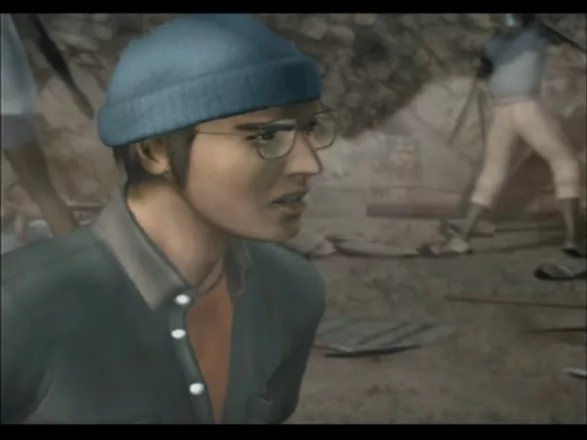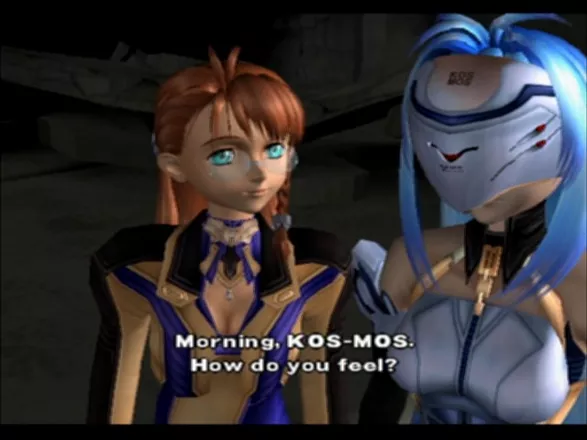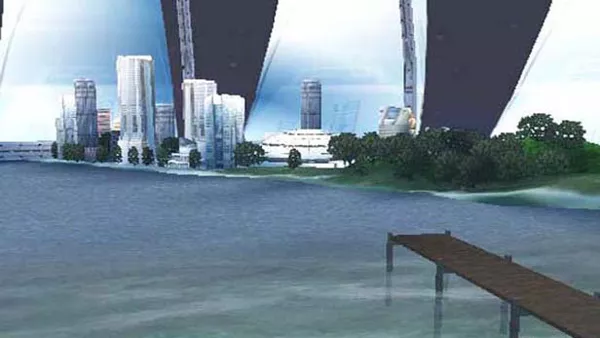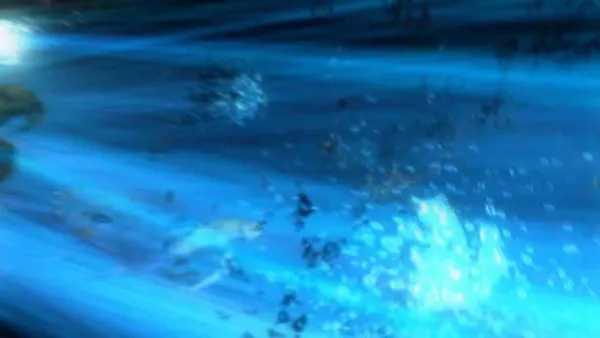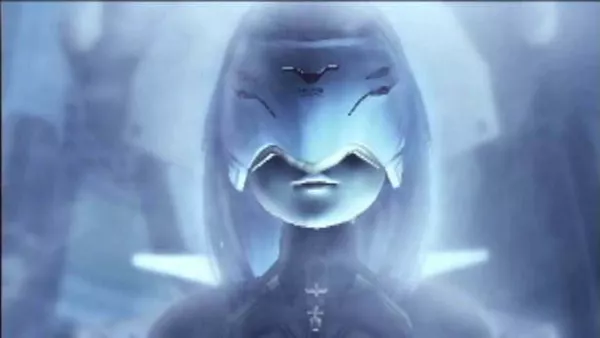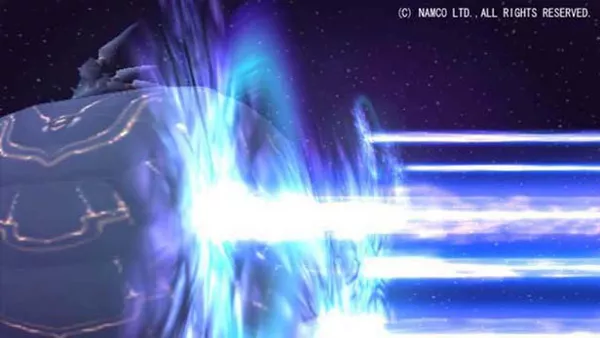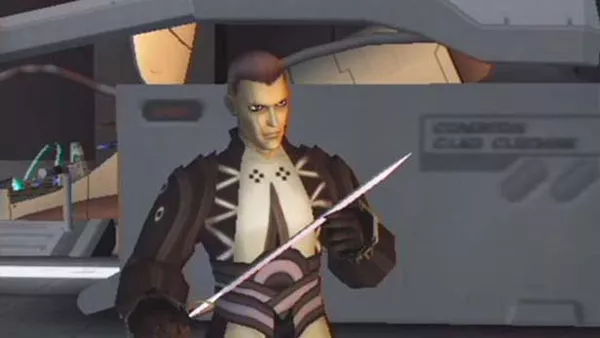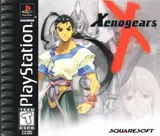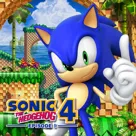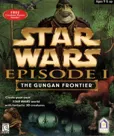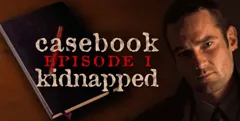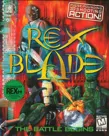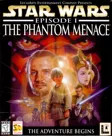Xenosaga: Episode I - Der Wille zur Macht
Description official description
In the 21st century, a group of scientists discovered a mysterious monolith near the Lake Turkana in Kenya. The substance contained within it, which later received the name Zohar, has quickly become a source of immense power. Humanity was eventually able to reach the stars, founding the Galaxy Federation and colonizing known space.
In the year 4767 T.C. (Transcend Christ) or 7277 A.D., according to the old year-counting system, humanity has long left the planet Earth, which has been renamed Lost Jerusalem and erased from star maps, the way to it no longer known. The original Zohar substance has been proven to be too dangerous, and was sealed on the planet Old Miltia, most humans resorting to use less powerful device called Zohar emulators instead. However, some organizations still long to re-discover the true Zohar, believing it to be the path to Lost Jerusalem.
Meanwhile, a new race of aliens known as Gnosis has emerged. The Vector Corporation decides to develop an android called KOS-MOS to be the ultimate weapon against the Gnosis. Shion Uzuki is a young engineer leading this project. After having completed KOS-MOS, Shion and her team are attacked by the Gnosis. Through a series of events, Shion becomes the target of the terrorist U-TIC organization and other mysterious figures, whose goal seems to be the secret path to Old Miltia. Other characters become involved in the conflict, and eventually Shion realizes that she is not alone in her struggle, and that the initial Gnosis attack was but a small part of a complex, multi-layered conspiracy.
Xenosaga: Episode I - Der Wille zur Macht, the first chapter of a trilogy, is a Japanese-style sci-fi role-playing game, sharing many common themes and gameplay elements with Xenogears. The battle system is not unlike the one used in Xenogears (combo attacks, AP and EP gauges, etc.), but random encounters are eliminated. Instead, the enemies are now visible and battles can be avoided. During combat the few upcoming ally and enemy turns are shown onscreen, allowing the player to make strategic decisions based on who will act next. A rolling slot moves with each turn as well, conferring a bonus such as added damage or bonus XP for any action on that turn. If the enemy would be in position to take an advantage then the player can expend a character's boost gauge to cut in and act next, although enemies can boost as well, and enemy boosts always over-ride player boosts.
Each character has a unique tree of ether spells they can learn by spending ether points earned in battle, with lower spells requiring spells above them to be purchased first. After a spell is purchased, so long is it does not require a unique talent of that character, the spell can also be purchased and learned by any other character that can afford double its normal cost. The Anti-Gnosis Weapon Systems can be equipped with different weapons and accessories and can be used in combat provided that a character has enough AP on that turn to board their AGWS.
Groups +
Screenshots
Promos
Videos
See any errors or missing info for this game?
You can submit a correction, contribute trivia, add to a game group, add a related site or alternate title.
Credits (PlayStation 2 version)
246 People (226 developers, 20 thanks) · View all
| Theme Songs |
|
| Music Composer | |
| Character Designer | |
| Production Designers | |
| Art Director | |
| Event Planning Director | |
| Quest Planning Director | |
| Battle Planning Director | |
| Map Planning Director | |
| Programming Director | |
| Event Programming Director | |
| Battle Programming Director | |
| CG Supervisor | |
| Animation Director | |
| Effects Director | |
| Event Scenario Writer | |
| 2nd Unit Production Designers | |
| [ full credits ] | |
Reviews
Critics
Average score: 83% (based on 21 ratings)
Players
Average score: 3.6 out of 5 (based on 49 ratings with 4 reviews)
Pseudo-philosophical space operas can be hazardous to gameplay
The Good
This review is about the entire Xenosaga trilogy, not just the first game. The three games are very similar, so whatever I'm going to say here should be applied to the whole thing.
The series had some pretty big shoes to fill - fans of the extravagant, intensely plot-driven RPG Xenogears were impatiently waiting for a game that was supposed to be a prequel of sorts. Xenosaga succeeds in imitating the older game's reliance on cutscenes that present a highly complicated plot. Whether this is a good thing or not is another question.
The battle system of Xenosaga varies slightly from installment to installment; the most sophisticated version is probably found in the second game, but overall there are a lot of common features (boosting, etc.), some of which are quite interesting. Particularly in the second episode, even some regular enemies can be somewhat difficult to defeat, and you do need to think and make plans for the bosses. All three games also have functional, not overly simplified skill trees and a good variety of characters to put in your party.
Giant mech ("gear") combat is back. It is least interesting in the first game, but becomes much more prominent in the third. Needless to say that fighting in those huge, yet agile metallic beasts is fulfilling no matter what the actual battle system is. And the battle system is probably the least of Xenosaga's problems.
There are no random battles. A Japanese RPG that has no random battles can't be scored as an absolute zero by me even if it has no other redeeming qualities. And in Xenosaga you can even sneak past enemies! Another nice ability is the destruction of objects. Using the square button, you can destroy all kinds of objects for various reasons: find hidden items, secret passages, or as part of solving puzzles. Speaking of which, there are some simple, yet nicely designed puzzles in some of the dungeons in all the three games.
Xenosaga has what some people consider the most complex plot ever written for a video game. Xenogears looks like a sweet, simple fable compared to this monster. Unresolved mysteries and plot twists pile up until they are finally dealt with in the last episode. Surprisingly, the latter does a really good job at filling out all those plot holes, and in the end the story appears to make sense after all. Lovers of gratuitous references to Jewish-Christian themes may rejoice: if a character doesn't have a badly spelled German name he is probably based on a Biblical persona. On a regular day, you'll be fighting the Gnosis while avoiding the Testaments because Abel insisted you need that Zohar. Again, the good thing is that it's not all completely stupid and irrelevant. The Nietzschean quotes do have a meaning, and the whole thing is wrapped up nicely as you slip into the familiar role of a fighter for human free will against the oppressive forces of quasi-deities.
The Bad
Did you think the (in)famous second disc of Xenogears was a monumental achievement of exploration-based gameplay? Me neither. But apparently the designers of Xenosaga did, because that's what those three games resemble most.
The days of Final Fantasy VII, when players could explore a large world with optional areas and uncover secrets, are long gone. Ultra-linear design rules the Japanese RPG realm with an iron fist, and Xenosaga happily submits itself to it. It takes linearity to the extreme: you can't even travel properly in these games. Most of the time you are simply taken to the next location automatically, and all you can do is explore the confined areas the game throws at you, advancing the plot. This kind of suffocating, patronizing, lazy design effectively turns the games into a long string of cutscenes connected by isolated gameplay segments.
This hurts the game even more because it is supposed to be a space opera. Just think of those words, be mentally teleported to Star Control II and feel how pitiful Xenosaga feels in comparison. But why go outside of the genre boundaries if the Japanese RPG industry had Alshark? Look at the pompous, overgrown plot of Xenosaga and compare it to the actual size of playable areas. All the locations of all the three games can fit into one planet of Alshark! How can we speak of evolution in this genre if its games keep shrinking like this?
Say what you want about Xenogears, but at least it had beautiful, large cities to explore. The populated areas of Xenosaga are disastrously small and empty. There are few places to visit, few people to talk to, and very little to do. Add to this cold, inexpressive visuals and lack of any camera rotation despite the 3D graphics, and you'll have pitiful decorations instead of a supposedly gigantic space. You can't navigate a spaceship, you can't explore planets, you can only follow the prescribed plot.
But at least the plot is great, right? Well, no, not in my opinion. Real passion was felt behind the convoluted contraptions of Xenogears. The emotional presentation of its characters was convincing. Not so in Xenosaga, where much of the story is just an artificial construction overloaded with fake religious themes and annoying anime-esque figures ridden with cliches sometimes bordering on perversions (do Japanese game designers really enjoy looking at a little girl's underwear?). The writing is weak, sometimes very annoyingly so, with characters repeating the same words over and over again, and the dialogue fluctuating between "... ... ..." and "I'll adjust the S-2356GH circuit in order to produce the maximal temperature of the A-V3 series Hilbert Effect according to the information stored in my neuro-physical cerebral connection to UBT-37 port".
Abundance of cutscenes can be tolerated if they are good. The reason why some people managed to accept the cutscenes in Metal Gear Solid games was because they were actually pretty cool. The cutscenes in Xenosaga, on the other hand, are thoroughly unexciting: there is no direction and camera work worth mentioning, and very little drama or suspense. The voice acting is sub-par as well.
If you are still willing to endure all that for a great revelation in the fields of religions and philosophy, you should stop right now, because all you'll get are disjointed chunks of badly digested second-hand ideas ranging from apocryphal gospels to inflated psychoanalytical images. Just because a game has a character called Yeshua doesn't mean that it goes any further than Master and Margarita or Jesus Christ Superstar in denigrating a sacred name to suit the tastes of our disillusioned times.
The Bottom Line
Xenosaga games are the epitome of contemporary Japanese RPG design: horrible linearity further weighed down by endless cutscenes. There are some nice ideas in the dungeons and the battle system is solid; but if you value gameplay more than badly written space operas with dubious pseudo-religious allusions, you might as well turn to another saga.
PlayStation 2 · by Unicorn Lynx (181780) · 2014
The Good
I love the battle system. The people in the game are good. I like the way it looks. Everything about it is good!
The Bad
It can be hard sometimes...
The Bottom Line
I would say pick this game up, RPG fans!
PlayStation 2 · by mila morrison (1) · 2005
Squaresoft should learn a lot from this game
The Good
Whow, and I thought I saw everything in the game's realm. Huh, was I surprised when this piece of jewel knocked on my door. Can't say I am or ever was a fan or role-playing games of any kind, and SquareSoft was particularly brutal in making me dislike the genre. So, as they did Xenogears I was prepared for the worst, but was still hoping for the best as it wasn't developer by Squaresoft. Not only was this game much easier than any Squaresoft's RPG ever made, but it let you follow the story completely and addictively as you can and want, not marching you towards hourless upgrades just in order to pass some incredibly silly point you got stuck with. I'm not saying this game doesn't offer any challenges, it does indeed, but it lets you follow the story, which is the main thing every game should let you (unless it has no story, in which case extra hard bosses would be acceptable, I suppose). I barely reached somewhat below level 50, yet I had no trouble beating final bosses in my first attempt. Not to mention, various upgrading options were so confusing at first that I was playing it fully weak until much later in the game, and still didn't encounter too much of a problem. Gotta admire them for that.
The game itself doesn't seem like it has any pre-rendered cinematics except the very opening to the story premise, but ingame graphics is so cool and beautiful you will not cry for anything pre-rendered. Oh, and if you thought that Metal Gear Solid 2 has too much cinematics, guess again. This game has at least twice that size, and they're all in motion. the music, although a bit scarce, takes the upper hand through the cinematics and is beautiful in every part of the game, thus having a soundtrack for this one is nothing hard to believe. Some of the tracks are fully voiced and perfectly depict serious situations, while others are so joyful you get a feeling Larry Laffer will pop outta nowhere any second now.
This is a party-based RPG, but bottomline, the game still majorly follows the story of Shion, a Chief Engineer of Vector Industries, who has her past haunting her, and her work to push her forward. Speaking of her work, the newest creation of anti-gnosis weapon, KOS-MOS (check up the cool little blue angel on the front cover, a-huh :) The main story progresses steadily but easily in the right way, isn't too fast to mess your mind up, nor too slow to make you bored. And in all that, many characters are to join you on your journey, Chaos, Momo, and some more, that all seem to have something to atone for one way or another, so you'll be following each of their background stories not to be too one-track minded, and some of them are quite interesting and daring.
The Bad
This game made me feel proud carrying a title of a player, and did something to me I haven't experienced in a while - forcing me to play it constantly until its very end. However, the main female protagonist has got to be one of the most annoying characters I've seen in a game. Not only does she never finish a sentence, but she constantly seems trouble by whatever's haunting her from her dark past and never answers differently than "It's... it's nothing." which can become really annoying after thousandth time. He's very unsure of herself, and everything else. Her insecurity would pretty much cost everyone else around her lives, she is way too self-centered and in dream-like state. She may be a genius when it comes to science, but... she acts like a spoiled brat and doesn't seem to think rational in almost any situation.
The Bottom Line
This game has great gameplay, a perfect balance between easy and hard, graphics are astonishing for the time being, the art itself is amazing, the color effects, the direction of cutscenes, it has really long movies which will often give you impression you're watching some pretty cool sci-fi anime, and it has a brilliant set of characters, goodguys as well as badguys, all creating a perfect harmony in this twisted yet highly likable storyline. I don't get it why the rating was this low, though, it has some scenes that might require a bit higher level, but guess not by a far, most of the time it's what it stands for. Also, the game shows an excellent point how people can be stupid, how military is but a mere puppet on a string of a madman, and gives an interesting balance between life and death all throughout the game. This game is as serious as it can be silly at the times, yet it's undoubtedly amazing.
PlayStation 2 · by MAT (240794) · 2012
Discussion
| Subject | By | Date |
|---|---|---|
| So, uhm, Nietzsche? | Donatello (466) | Jun 9, 2012 |
Trivia
Artbook
Like Xenogears before it, Xenosaga has a companion artbook published with it that contains original artwork used in the conception of the game as well as details on characters, events, locations and background story. It should also be pointed out that some of these events are *modified* (like the game) from those listed in the similar Xenogears: Perfect Works guide.
History and language
- Like Xenogears, Xenosaga is full of references to the Bible and to Jewish mythology in general. For example, the mysterious energy Zohar means "glow" in Hebrew and is one of the central aspects of Jewish mysticism (Kabbala).
- The sign written on Zohar is Alef, the first letter of the Hebrew alphabet.
- One of the game's main characters is called Ziggurat. Ziggurats (also spelled Zikkurat or Ziqqurat) were tower-temples in the ancient Mesopotamia (today's Iraq). The famous Babel Tower was most probably also a ziggurat.
- The scientist Joachim Mizrahi, one of the game's central figures, has probably Israeli ancestors. "Mizrahi" is a popular family name in Israel, and the word itself means "eastern" in Hebrew.
- Another Biblical trivia: the 13 Zohar emulators possessed by Kukai Foundation are named after the 12 pupils of Jesus and Jesus himself (Child of Mary). The Zohars are also numbered - by letters of the Hebrew alphabet, that also serve as numbers (alef = 1, bet = 2, etc).
- Did you notice how Albedo always calls Momo and other Realian girls ma pêche? This is a common affectionate word used in French language, but literally it means my peach. Does it have any other meaning in the context? Yes, it does: momo also means "peach", this time in Japanese.
Special edition
Got about $200 to burn? For that cash, you can pick up a Special Edition Box of Xenosaga, which comes with the game on two DVDs (with different artwork on the discs), an artbook, a keychain, a portfolio, and a cold-cast statue of KOS-MOS.
Awards
- GameSpy
- 2003 – PS2 RPG of the Year
- 2003 – #10 PS2 Game of the Year
Information also contributed by Unicorn Lynx and WildKard
Analytics
Upgrade to MobyPro to view research rankings!
Related Sites +
-
The Ethos Sanctuary - Xenogears/Xenosaga information
Xenosaga Shrine -
Xenosaga: Episode I - Der Wille zur Macht
Official game website
Identifiers +
Contribute
Are you familiar with this game? Help document and preserve this entry in video game history! If your contribution is approved, you will earn points and be credited as a contributor.
Contributors to this Entry
Game added by Unicorn Lynx.
Additional contributors: Satoshi Kunsai, Shoddyan, Exodia85, DreinIX, Caelestis, Patrick Bregger.
Game added April 22, 2002. Last modified March 23, 2024.

